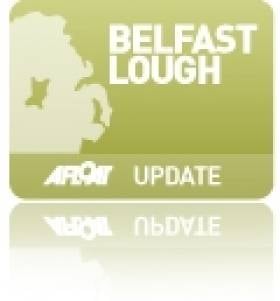Displaying items by tag: HMS Caroline
Belfast Harbour Boat Tours and WWI Warship Gem
#BELFAST HARBOUR TOURS- If there was ever a time to take a tour of Belfast Harbour, it is now on board the Lagan Boat Company, particularly in light of on-going developments as previously reported to keep the WWI veteran cruiser HMS Caroline in the city, writes Jehan Ashmore.
The 98-year old ship which is the last survivor of the famous Battle of Jutland in 1916, is facing another battle from threat of scrapping or a new life albeit towed to Portsmouth's Historic Dockyard for preservation. Yet there is a campaign to keep the historic ship in the city as tourist attraction.
A great opportunity is provided on board the excursion as the very informative guided-boat tour gives unrivalled access to HMS Caroline moored in Alexandra Dock.
While en-route, the excursion boat which departs from Donegall Quay (several minutes-walk from City Hall), passes the new Titanic Belfast visitor attraction and the world famous symbolic Samson and Goliath cranes at Harland & Wolff.
As the boat enters Alexandra Dock, passengers get very much up close and personal views of HMS Caroline, as the riveted hull complete with portholes looms above. As of a result, one immediately senses a different era in shipbuilding techniques with her cruiser stern and highly flared bow. In addition her distinctive profile of three funnels resembling liners also of old and a tripod foremast.
Since she first came to Belfast in 1924, HMS Caroline has performed various roles. She acted as a floating administrative base during WWII. She then became headquarters and training ship for the Royal Naval Volunteer Reserve in Northern Ireland.
Her career came to an end after 97 years with the Royal Navy, when formally decommissioned by the MoD when reserves transferred to HMS Hibernia (not a ship) in Thiepval Barracks in Lisburn during March 2011. For more about the campaign and proposals to save the ship in her homeport, click HERE





























































